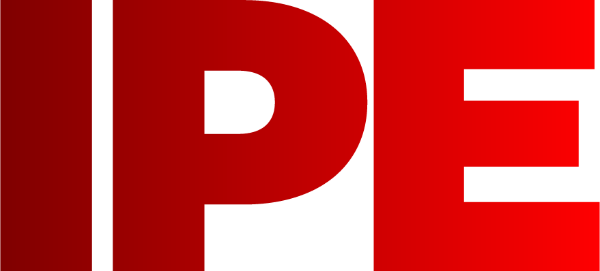

|
Edward Lowton
Editor |


|
| Home> | Premises management/maintenance | >Waste management and recycling | >Sourcing solutions |
ARTICLE
Sourcing solutions
25 January 2013
While many manufacturers encourage spares and component suppliers to compete for the lowest price quotations, some are finding this approach less than satisfactory.Darren Pratt, Encoders and Industrial Instrumentation Pro

While many manufacturers encourage spares and
component suppliers to compete for the lowest price
quotations, some are finding this approach less than
satisfactory.Darren Pratt, Encoders and Industrial
Instrumentation Product Specialist, SICK (UK), comments
Aconsumer might imagine that a large successful manufacturing enterprise is run on a strict cost-control basis, with all purchasing decisions rationally made and factory equipment specified to deliver optimum efficiency. The reality, as we all realise, can vary from this by an appreciable extent.
The factors which dictate that manufacturing operates at a less than ideal state of efficiency can be broadly divided into three interlinked categories: legacy, human and economic.
Legacy can have a heavy influence on efficiency. In, for example, a large food and beverage conglomerate with many different factories and businesses under its banner, there is bound to be a wide gap between the most up-to-date and the less developed parts of the concern.Within such a conglomerate, the range of production processes and equipment will extend from older machinery and plant that have worked perfectly for years, to the most up-to-date with all the latest automation and hygiene features.
The processes and equipment have to be supported by a spares and stores inventory to ensure that production is as continuous as possible. It is almost inevitable that, the longer production has been going on, the longer the inventory of parts that accumulates as each new process is introduced. Also inevitable is that a certain number will be from sources no longer in business. A particular function of purchasing is dealing with the suppliers of the parts, whether manufacturers, OEMs and distributors either live or internet-based. There is, as every purchasing manager will testify, a lot of time tied up in chasing suppliers, from those who specialise in one small component, to those who can supply a wide spectrum. For a large concern, such as a fast food and beverage consumer brand manufacturer, the list of production equipment suppliers can be many tens or even hundreds long.
Rationalisation of the spares inventory is one of the periodic exercises undertaken by the purchasing / spares function, often coinciding with the value engineering of the production processes. The objective of rationalisation is inevitably to reduce spares and time costs of managing a large spares inventory. If properly managed, the process should consider issues such as availability, continuity of supply, support and service.
Decisions over buying directly from the manufacturer, the equipment supplier or via distributors depends on stock holding, on the quality of service offered by each and on the time available to the purchaser.
While a large distributor may hold a wide range of 'commodity' stock and deliver in 24h, there are benefits for the supplier in working closely with the distributor. Developing the level of service offered can result in an enhanced relationship; this can include technical support, offering more specialist items and even, for instance, profiling the requirements of particular customers.
This partnership approach can bring three way benefits. The manufacturer receives an improved level of confidence in being able to reduce the problems of equipment failure with in-depth local support. The distributor receives an enhanced and regular income stream and, finally, the supplier has an assured market and reduced distribution costs. However, this is a relationship that must be constantly addressed and refreshed to remain successful in the long term.
It is no wonder then that, in response to the difficulties of managing the purchasing process, a number of firms are moving towards streamlining the procedure through similar partnerships As a supplier of a range of key components for food and beverage processing (and applications across manufacturing), we deal with businesses with whom our first contact is being called in to supply a single sensor on a very large and complex piece of equipment.
SICK has a wide range of sensors, encoders, scanners, vision equipment and industrial instrumentation for the processing industries. The advantages of having distributor partner support for single source supply are many. Arguments against, on the grounds of competitiveness, can usually be offset against a more efficient, streamlined purchasing stream, better able to negotiate advantageous agreements on a wider scale.
For example, in a sensing option, properly technically grounded support can say that a particular type of sensor or level indicator could be standardised throughout a process, simplifying purchasing and spares management. Because a wide variety of technologies is covered in our products, we are not confined to one option, thus offering optimum solutions.
Single source or preferred distribution supply agreements should also help facilitate process equipment design through value engineering. The benefits are such that some large multi-national branded food and beverage companies are seeking to implement these where advantageous throughout their empires. Providing the required flexibility and choice are carefully integrated, a strategic policy favouring these arrangements should deliver long term benefits from stability and assurance of supply, access to quality input from a widely based manufacturer as well as overall cost reductions and efficiency improvements throughout the production process.
Aconsumer might imagine that a large successful manufacturing enterprise is run on a strict cost-control basis, with all purchasing decisions rationally made and factory equipment specified to deliver optimum efficiency. The reality, as we all realise, can vary from this by an appreciable extent.
The factors which dictate that manufacturing operates at a less than ideal state of efficiency can be broadly divided into three interlinked categories: legacy, human and economic.
Legacy can have a heavy influence on efficiency. In, for example, a large food and beverage conglomerate with many different factories and businesses under its banner, there is bound to be a wide gap between the most up-to-date and the less developed parts of the concern.Within such a conglomerate, the range of production processes and equipment will extend from older machinery and plant that have worked perfectly for years, to the most up-to-date with all the latest automation and hygiene features.
The processes and equipment have to be supported by a spares and stores inventory to ensure that production is as continuous as possible. It is almost inevitable that, the longer production has been going on, the longer the inventory of parts that accumulates as each new process is introduced. Also inevitable is that a certain number will be from sources no longer in business. A particular function of purchasing is dealing with the suppliers of the parts, whether manufacturers, OEMs and distributors either live or internet-based. There is, as every purchasing manager will testify, a lot of time tied up in chasing suppliers, from those who specialise in one small component, to those who can supply a wide spectrum. For a large concern, such as a fast food and beverage consumer brand manufacturer, the list of production equipment suppliers can be many tens or even hundreds long.
Rationalisation of the spares inventory is one of the periodic exercises undertaken by the purchasing / spares function, often coinciding with the value engineering of the production processes. The objective of rationalisation is inevitably to reduce spares and time costs of managing a large spares inventory. If properly managed, the process should consider issues such as availability, continuity of supply, support and service.
Decisions over buying directly from the manufacturer, the equipment supplier or via distributors depends on stock holding, on the quality of service offered by each and on the time available to the purchaser.
While a large distributor may hold a wide range of 'commodity' stock and deliver in 24h, there are benefits for the supplier in working closely with the distributor. Developing the level of service offered can result in an enhanced relationship; this can include technical support, offering more specialist items and even, for instance, profiling the requirements of particular customers.
This partnership approach can bring three way benefits. The manufacturer receives an improved level of confidence in being able to reduce the problems of equipment failure with in-depth local support. The distributor receives an enhanced and regular income stream and, finally, the supplier has an assured market and reduced distribution costs. However, this is a relationship that must be constantly addressed and refreshed to remain successful in the long term.
It is no wonder then that, in response to the difficulties of managing the purchasing process, a number of firms are moving towards streamlining the procedure through similar partnerships As a supplier of a range of key components for food and beverage processing (and applications across manufacturing), we deal with businesses with whom our first contact is being called in to supply a single sensor on a very large and complex piece of equipment.
SICK has a wide range of sensors, encoders, scanners, vision equipment and industrial instrumentation for the processing industries. The advantages of having distributor partner support for single source supply are many. Arguments against, on the grounds of competitiveness, can usually be offset against a more efficient, streamlined purchasing stream, better able to negotiate advantageous agreements on a wider scale.
For example, in a sensing option, properly technically grounded support can say that a particular type of sensor or level indicator could be standardised throughout a process, simplifying purchasing and spares management. Because a wide variety of technologies is covered in our products, we are not confined to one option, thus offering optimum solutions.
Single source or preferred distribution supply agreements should also help facilitate process equipment design through value engineering. The benefits are such that some large multi-national branded food and beverage companies are seeking to implement these where advantageous throughout their empires. Providing the required flexibility and choice are carefully integrated, a strategic policy favouring these arrangements should deliver long term benefits from stability and assurance of supply, access to quality input from a widely based manufacturer as well as overall cost reductions and efficiency improvements throughout the production process.
MORE FROM THIS COMPANY
- IO-Link compatibility added to absolute encoders
- Packaging machines: Safeguarding operators
- Vision-guided part localisation
- Safety relay
- SICK SensorApps ensure smooth docking for pallets and dollies
- Cobot collaboration delivers entry-level vision-guidance
- Miniature capacitive sensor
- Dynamic safety
- Sensor Integration Machines boost SICK's 'edge' processing power
- SICK launches safeVisionary2
OTHER ARTICLES IN THIS SECTION

















